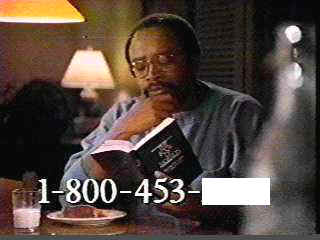 By
Rafael Martinez, Director, Spiritwatch Ministries
By
Rafael Martinez, Director, Spiritwatch Ministries
From the earliest days of it's origins, the Mormon Church has regarded the Book of Mormon as a divinely inspired book that contains revelations and teachings as authoritative as the Bible itself. The Eighth Article of Faith for the church states that "we believe the Bible to be the word of God as far as it correctly translated; we also believe the Book of Mormon to be the Word of God." Throughout it's history, the Mormon Church's passion to spread it's interpretation of the Gospel of Christ has been accompanied with an equal fervancy to proclaim to the world that the Book of Mormon is also the Word of God. But although it is zealously viewed as Holy Scripture by millions of Latter Day Saints around the world, the Book of Mormon can hardly be said to be "divinely inspired" because of its questionable origins, confusing contradictions and irreconcilable problems that it supplies to the claims of Mormonism. We wish to examine in this article what is actually behind the Book of Mormon, what the untold story behind it's creation and development is, a story Mormons won't tell you mainly because most of them are completely unaware of it themselves, due to their church leadership's obvious reluctance to let the truth be known.
The religious zeal of Latter Day Saints for the Book of Mormon and it's story is based entirely upon their sincere belief that it is divinely inspired by God and is the source of new revelation about the purposes of God for mankind. The Church teaches that it is an accurate record of actual historical events that record the dealings of God and Christ with the peoples of the ancient Americas. The President of the LDS Church, Gordon Hinckley wrote in his 1979 book Truth Restored that the book contains an "unusual story":
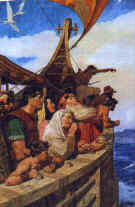 It concerned the
descendents of a family who left Jerusalem about 600 B.C. .. Building a ship, the family
crossed the oceans and landed somewhere on one of the American continents. From this
family sprang two nations known as the Nephites and the Lamanites. For the most part, the
Nephites were a God-fearing people, while the Lamanites were generally .. wicked. The
Nephites had among them the history of Israel up to the time the family had left
Jerusalem, and with this they kept a record of their own nation as well as translations of
writings from other civilizations they encountered. .. Most remarkable of all, the Savior
visited these people following his resurrection .. taught them the principles he had
taught in Palestine and set up his church among them, giving it leadership authority
identical to that which he conferred upon the twelve apostles in Jerusalem. Following the
teachings of Christ, these people lived in peace and happiness for generations. But as the
nation grew prosperous it became wicked, despite the warnings of the prophets. Among these
prophets was Mormon, who in his day kept the chronicles of the nation. From these
extensive records he had compiled on plates of gold an abridged record. This he had given
to his son, Moroni, who survived the destruction of the Nephite nation at the hands of the
Lamanites. Moroni, prior to his death, buried the record in the Hill Cumorah, where Joseph
Smith received it some fourteen centuries later. A remnant of the Lamanite nation is found
today among the American Indians (1).
It concerned the
descendents of a family who left Jerusalem about 600 B.C. .. Building a ship, the family
crossed the oceans and landed somewhere on one of the American continents. From this
family sprang two nations known as the Nephites and the Lamanites. For the most part, the
Nephites were a God-fearing people, while the Lamanites were generally .. wicked. The
Nephites had among them the history of Israel up to the time the family had left
Jerusalem, and with this they kept a record of their own nation as well as translations of
writings from other civilizations they encountered. .. Most remarkable of all, the Savior
visited these people following his resurrection .. taught them the principles he had
taught in Palestine and set up his church among them, giving it leadership authority
identical to that which he conferred upon the twelve apostles in Jerusalem. Following the
teachings of Christ, these people lived in peace and happiness for generations. But as the
nation grew prosperous it became wicked, despite the warnings of the prophets. Among these
prophets was Mormon, who in his day kept the chronicles of the nation. From these
extensive records he had compiled on plates of gold an abridged record. This he had given
to his son, Moroni, who survived the destruction of the Nephite nation at the hands of the
Lamanites. Moroni, prior to his death, buried the record in the Hill Cumorah, where Joseph
Smith received it some fourteen centuries later. A remnant of the Lamanite nation is found
today among the American Indians (1).
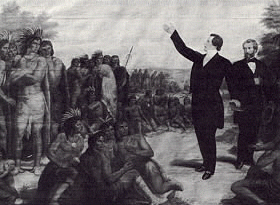 Over the years, the Church has encouraged and established various means
to foster the rock solid conviction in LDS culture about the Book of Mormon as a
truthful and divine record. Within the book itself is a "testimony of three
witnesses" who claimed to have seen the engraved golden plates of Mormon. These three
men, Oliver Cowdery, Martin Harris and David Whitmer asserted that "an angel of God
came down from heaven .. and laid before our eyes .. the plates and engravings
thereon." From early mission work that spread copies of the book among native
American tribes to claims that the Smithsonian Institution has used it as a reference for
central American archaeological expeditions, the Mormon Church has rallied it's members
around the Book with a crusader's
fervor. During testimony times in LDS meetings, missionaries and church leaders will
testify as to their personal conviction regarding the book's authenticity ("I testify
before you today that I know the Redeemer lives, that the Book of Mormon is true ..
etc."). The Church endlessly advances a challenging teaching - drawn directly
from the Book of Mormon - that investigators into the claims of Mormonism may discover for
themselves the truthfulness of the book through a spiritual experience called a
"burning in the bosom," which directly reveals to them it's divinity by sincere
prayer to God. Many spiritual traditions and folklore as to the supernatural aspects of
the book have been passed down through Mormon culture to further reinforce this
conviction.
Over the years, the Church has encouraged and established various means
to foster the rock solid conviction in LDS culture about the Book of Mormon as a
truthful and divine record. Within the book itself is a "testimony of three
witnesses" who claimed to have seen the engraved golden plates of Mormon. These three
men, Oliver Cowdery, Martin Harris and David Whitmer asserted that "an angel of God
came down from heaven .. and laid before our eyes .. the plates and engravings
thereon." From early mission work that spread copies of the book among native
American tribes to claims that the Smithsonian Institution has used it as a reference for
central American archaeological expeditions, the Mormon Church has rallied it's members
around the Book with a crusader's
fervor. During testimony times in LDS meetings, missionaries and church leaders will
testify as to their personal conviction regarding the book's authenticity ("I testify
before you today that I know the Redeemer lives, that the Book of Mormon is true ..
etc."). The Church endlessly advances a challenging teaching - drawn directly
from the Book of Mormon - that investigators into the claims of Mormonism may discover for
themselves the truthfulness of the book through a spiritual experience called a
"burning in the bosom," which directly reveals to them it's divinity by sincere
prayer to God. Many spiritual traditions and folklore as to the supernatural aspects of
the book have been passed down through Mormon culture to further reinforce this
conviction.
Testament Or Contradiction?
In 1841, Joseph Smith wrote that "the Book of Mormon was the most correct book on earth, and the keystone of our religion, and a man would get nearer to God by abiding by its precepts, than by any other book .. Take away the Book of Mormon and the revelations, and where is our religion? We have none" (2). Obviously, this takes a far less complimentary position on the Bible than the attractive TV ads for the Book of Mormon would have one believe ("..the Book of Mormon is a companion volume to the Bible .." one commercial's voiceover assures us). Even today, as if taking their cue from Smith's writings, LDS missionaries and members still will tell you that there are thousands of errors in the Bible, and contradictions between various translations of the Bible should you ask them. Orson Pratt, an early LDS Church leader, was emphatic on this point: "..The Bible has been robbed of its plainness; many sacred books having been lost .. what few we have left, were copied and re-copied so many times, that it it is admitted that almost every verse has been corrupted and mutilated to that degree that scarcely any two of them read alike. .. all we have left are mutilated copies containing an incredible number of contradictory readings." (3).
Although this kind of official rhetoric has largely been muted due to the LDS Church's attempt to mainstream itself into the Christian world, these atittudes persist in it at every level of its culture. Despite the affirmation of the Bible as sacred writ, the Book of Mormon is viewed clearly by Mormons as a superior revelation, and for all their praise of it, the Bible is actually seen as "damaged goods," a document fraught with distortion, error, fabrication and sectarian bias. With this in mind, we'd like to consider the several serious issues concerning the Book of Mormon itself that will give the discerning true food for thought as to its claims of being of a "divine nature". We will consider briefly only a few of these.
One of these are the confusing contradictions that may be found in the
text of the book. First of all, the cultural characteristics of the Hebrew colonists of
the ancient Americas as described in it do not appear to conform to those of national
Israel in the Old World. The Nephite peoples who are described as being true worshippers
of God who kept the Law of Moses, are never shown as participating or celebrating any of
the major feasts, sacrifices and religious customs that all law-keeping Hebrews certainly
kept. Only one or two references to lawkeeping are made, and yet there are no explicit
references to the keeping of a Passover, the circumcision of male children, the sacrifices
of offerings upon altars, and the observance of Sabbaths made anywhere in the accounts of
the Nephite nation.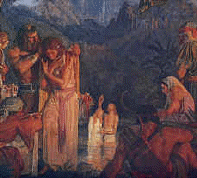
This may be due to the fact that the theology of the book seemed to be influenced by an explicitly Christian worldview, and not a Hebrew one. The righteous Hebrew colonists of the Book of Mormon are repeatedly said to have been establishing churches and believing on the Lord Jesus Christ over 500 years before his birth. Their vocabulary and piety seem more in keeping with that of contemporary evangelical Christianity than ancient Jews who kept the law. Nothing resembling this kind of Christ-centered religious belief was practiced anywhere in the Ancient Near East until at least the first century A.D. Yet we find the Nephite prophets engaging in preaching (Alma 21:9), aggressive evangelistic campaigns (Enos 1:26), the baptizing of new converts and organization of church congregations (Mosiah 18). These seemingly inexplicable paradoxes raise serious questions about the account that Latter Day Saints must squarely face:
How, we ask, could the Nephites conduct themselves in a distinctively Christian faith and practice decades, even centuries before the Savior was even born, even while God's dealings with the nation of Israel at this time still involved the keeping of the law? A casual reading of the Old Testament books of Ezra and Nehemiah shows this: while the Nephite-Lamanite civilizations supposedly were being established in the Americas and given the revelation of redemptive faith in Christ, the Jews of the Diaspora who had returned from Babylon to rebuild Jerusalem and the temple were being enjoined by God to keep the law of Moses.
Why did the God-fearing Nephites persist in practicing the Old Covenant (2 Nephi 5:9-11) by keeping the law of Moses - years after they were aware that keeping it would be futile in light of the divine revelation of the New Covenant of Jesus Christ they claimed to have already received ( 2 Nephi 2:3-6)? This confusing contradiction of religious belief and practice creates a strange and inexplicable conflict of the principles of Jewish law and Christian grace that make no logical sense at all.
How do Latter Day Saints explain the usage of a vocabulary and terminology by Jewish colonists escaping an apostate Israel five centuries before it was ever developed? Even BYU professor S. Kent Brown had to admit that "the following titles and names used by Nephi seem to be more at home in a later era such as that of the New Testament or of early Christianity: Beloved Son...Son of the living God... Only Begotten of the Father... Jesus Christ... true vine... light..." (4)
Perhaps one of the most inexplicable contradictions lies in the fact that the Book of Mormon doesn't teach one major doctrinal distinctive of the LDS Church. One of the other sacred texts (called "standard works") of the LDS Church, the Doctrine and Covenants, states emphatically in D & C 20:9 that "the Book of Mormon .. contains a record of a fallen people, and the fulness of the gospel of Jesus Christ to the Gentiles and to the Jews also." This "fulness" logically must be what 1 Nephi 13:33-34 alludes to as "the most plain and precious parts of the Gospel of the Lamb" which the LDS Church asserts has been lost, as we have seen. These "plain and precious parts" are the major and unique doctrines of LDS teaching that are said to have been "restored" by Joseph Smith's translation and printing of the Book of Mormon. Some of these doctrinal positions are: that there are millions of gods in the universe, that all men have the potential of divinity and can progress spiritually into becoming gods themselves, and that one's ultimate salvation lies in entering one of several levels of heavenly glory through the keeping of strict moral codes, participation in priesthoods and temple rituals in the context of domestic LDS patriarchy (5).
A careful study of the Book of Mormon, however, fails to provide any evidence that any of the ancient Nephites ever lived by such beliefs. Details of Nephite lifestyle demonstrating that they baptized for the dead, sought "exaltation" to godhood, or did "temple work" are completely lacking. Yet this "other testament of Jesus Christ" is said to contain the "fulness" of the restored gospel all the while giving absolutely no record of what this "fulness" is. This becomes even more perplexing when the one of the first discourses that Jesus supposedly delivered to the Nephites in 3 Nephi 11 is examined.
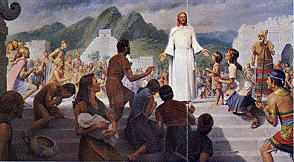 Verses 31 to 41 contain a concise declaration
Jesus allegedly delivers, which he qualifies: "Behold, verily, verily, I say unto
you, I will declare to you my doctrine .." In the New Testament Gospel accounts by
the apostles Matthew, Mark, Luke and John, the usage of each of these emphatic
imperatives are meant to emphasize Jesus' call to those listening to him to give
special attention to what he was going to say. Therefore, it would seem that Jesus
was enjoining the Nephites to hear him once and for all define the Gospel. The ten verse
passage contains only three exhortations to repent and believe on Christ, but
absolutely no reference to any of the LDS doctrinal distinctives we have referred to.
In fact, Jesus allegedly goes on to say that:
Verses 31 to 41 contain a concise declaration
Jesus allegedly delivers, which he qualifies: "Behold, verily, verily, I say unto
you, I will declare to you my doctrine .." In the New Testament Gospel accounts by
the apostles Matthew, Mark, Luke and John, the usage of each of these emphatic
imperatives are meant to emphasize Jesus' call to those listening to him to give
special attention to what he was going to say. Therefore, it would seem that Jesus
was enjoining the Nephites to hear him once and for all define the Gospel. The ten verse
passage contains only three exhortations to repent and believe on Christ, but
absolutely no reference to any of the LDS doctrinal distinctives we have referred to.
In fact, Jesus allegedly goes on to say that:
.. whoso shall declare more or less than this and establish it for my doctrine, the same cometh of evil, and is not built upon my rock; but he buildeth upon a sandy foundation, and the gates of hell stand open to receive such when the floods come and the winds beat upon them (v. 40, emphasis mine)
Such a declaration attributed to none other than Christ spells out a clear and unmistakable mandate against any doctrinal or theological formation at all. This unfavorable light upon any doctrinal teaching is a double edged sword that cuts terribly against anyone who would bring forth sayings and practices that Christ never produced. It is one of the most serious contradictions found within the Book of Mormon itself: it places the doctrinal and practical innovations of Joseph Smith, Brigham Young and every other LDS leader since 1830 in decidedly direct disobedience to Christ, and in clear danger of divine judgment. Such a bizarre paradox is undeniably present here. Had the LDS Church committed itself to proclaiming these simple truths as found in the Nephite discourse, it would be today a powerful ally in the advance of the true Gospel of Jesus Christ. Instead, it has since the 1830's, established a body of tradition, teaching and practice in the name of a "Restoration" that blatantly contradicts the commands supposedly made by Jesus here in the ancient Americas. This and many other inexplicable contradictions render the Book of Mormon a literary work of towering inconsistency. - if not blasphemy.
The Impossible Stories
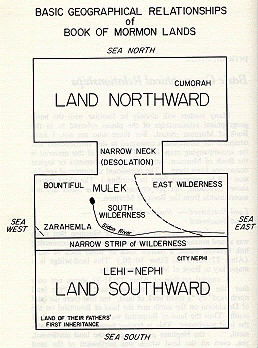 There are many other irreconcilable problems
posed by the claims of the Book of Mormon which also cast serious doubt upon its
legitimacy. There is, to begin with, no archaeological evidence that conclusively supports
the claims that ancient American civilizations - such as the book describes - ever
existed. No scientific expedition has yet to unearth a single ancient ruin or artifact in
the Americas that might prove that cities like Bountiful, peoples such as the
Zoramites,
and any of the great wars mentioned in the Book of Mormon actually did exist in the past.
No map of the "ancient Americas" of the Book of Mormon as it describes them has
ever been officially produced by the Church to corroborate its claims. This diagram (from
LDS Venice Priddis' The Book And The Map) is one of the many unofficial lay LDS
attempts to do so. It actually proves that there are scores of thinking Latter Day Saints
trying to find more tangible foundations for their faith than a "burning in the
bosom."
There are many other irreconcilable problems
posed by the claims of the Book of Mormon which also cast serious doubt upon its
legitimacy. There is, to begin with, no archaeological evidence that conclusively supports
the claims that ancient American civilizations - such as the book describes - ever
existed. No scientific expedition has yet to unearth a single ancient ruin or artifact in
the Americas that might prove that cities like Bountiful, peoples such as the
Zoramites,
and any of the great wars mentioned in the Book of Mormon actually did exist in the past.
No map of the "ancient Americas" of the Book of Mormon as it describes them has
ever been officially produced by the Church to corroborate its claims. This diagram (from
LDS Venice Priddis' The Book And The Map) is one of the many unofficial lay LDS
attempts to do so. It actually proves that there are scores of thinking Latter Day Saints
trying to find more tangible foundations for their faith than a "burning in the
bosom."
In recent years, there has been a sharp escalation in the emergence of LDS initiatives to provide reasons for their belief systems (through organizations like FARMS, FAIR and a plethora of self-appointed LDS apologists). But despite these Mormon-sponsored efforts to prove otherwise, there is no solid evidence that demonstrates any link between the Book of Mormon civilizations and any of the actual ancient native American cultures (such as the Incas, Aztecs, Mayans and Toltecs) that once thrived here. Any maps you may find in LDS seminaries, books and other media are nothing more than optimistic and creative speculation of the "way it might be", a futile and inconclusive attempt to deduce what the topography and world of the Book of Mormon was. As we have mentioned, one popular tradition routinely circulated by many within the LDS culture is that the Book of Mormon had been at one time used by Smithsonian Institution researchers on archaeological expeditions. This "faith-building" story - not surprisingly cited by LDS missionaries as proof of the book's factuality - was an outright fabrication that the prestigious Institution was forced to refute in a statement that categorically denied this. Where the story originated is irrelevant, but the fact that the story - like urban legends today - continues to be circulated by some Latter Day Saints and their missionaries reveals the extent to which they realize the need to find factual and tangible proof for their faith - if not for themselves than for at least those they seek to convert.
The anthropological findings of generations of researchers have revealed a far different picture of the culture and people of the ancient Americas than those of the Nephite and Lamanite nations described in the Book of Mormon. This factual picture raises even more substantial problems for LDS claims of the book's historicity. One of these concern the profound ethnic differences between native American and Jewish peoples. Established ethnological research has come to the long-standing conclusion that the native American tribes are of the Mongoloid race who emigrated from eastern Asia thousands of years ago, and not of the Semitic races that arose in western Asia. The physical characteristics between both groups of people differ quite widely, but this should not be so if the Semetic bloodlines of the Hebrew colonists were actually shared with native American ones. For Mormons to insist that American Indians are actually Israelites only proves their stubborn desire to ignore the facts.
This cultural disparity only continues to provide some compelling challenges to this impetuous effort by the LDS Church to defend their sacred text. In addition to these ethnic differences, the history, weaponry and livestock of the ancient Americas were as different from those mentioned in the Book of Mormon as night differs from day. While the arrival of the Nephite colonists is said to have occurred in the fifth century B.C., evidence exists that indicates that the ancient inhabitants of the Americas occupied the land - at the very least - almost 1300 years before then. The development of the cultures that built the now abandoned Central American cities said to have been the creation of the competing Lamanite and Nephite nations do not appear to have started until at least the second century A.D. - long after Book of Mormon chronology dictated otherwise (6). Swords of steel, copper breastplates and curved scimitars are mentioned as part of the armament that the warring Nephite and Lamanite factions used, despite the fact that metallic weaponry was completely unknown to the ancient peoples of the New World, as well as the knowledge needed to work metallic ores into weapons. (the only extensive metalwork found in the ancient Americas was highly wrought gold jewelry).While these two nations supposedly built their empires with the work of draft animals and fought wars with horseborne warriors and chariots, it has been long established that the native Americans never used beasts of burden, nor even the wheel itself. Time fails us to discuss in detail any of the other sharp differences, but the evidence is there and speaks for itself.
The Real Origins Of The Book Of Mormon
Turning from an examination of the Book of Mormon as an accurate record of God's workings in human affairs in the Western Hemisphere over two and a half millenia ago, we still find many disturbing elements that cast serious doubt upon its authenticity. Despite Gordon B. Hinckley's sanitized and pious version of the story behind the origins of the Book of Mormon, the LDS Church still has yet to answer to the questionable character and activities of those responsible for its publication.
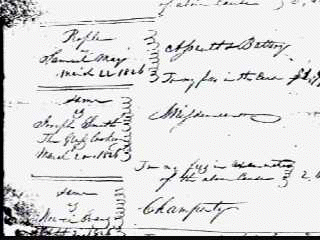 For example, there is Joseph Smith's established reputation as a young man
given to producing imaginative and convincing tales among the nineteenth century
communities of western New York where he lived. Chenango County court records from an 1826
trial still exist (7) which show that Smith, under examination by a judge, claimed to have made a living by
using gazing into stones (a folk occult practice called "glass looking") to find
buried treasure. Other reliable sources also showed that Smith claimed on several
occasions a knowledge of the location of hidden treasures guarded by evil spirits
(8). There also exists the testimony of Smith's contemporaries and even his own
family concerning the actual origins of the golden plates of Mormon's history. In 1833,
three years after the Book of Mormon was published, sworn affidavits from many of them
were collected which cast further light on Smith and his first efforts to unveil it. One
witness swore that upon entering his home with several quarts of sand tied up in his
frock, Smith, on a whim, told his family that he had found a "golden Bible" and
had received a commandment to allow no one to see it. Another, under oath, revealed that
Smith had approached him about building a chest to contain the "golden book",
and that he later heard from one of his neighbors that Smith had told him that he did not
have such a book, nor ever had one, but that he had told the story to get the witness to
fabricate a chest for his usage. As incredible as these depositions may sound, they
actually are documented statements that cannot be ignored, especially when corroborated by
the court records of Smith's trial.
For example, there is Joseph Smith's established reputation as a young man
given to producing imaginative and convincing tales among the nineteenth century
communities of western New York where he lived. Chenango County court records from an 1826
trial still exist (7) which show that Smith, under examination by a judge, claimed to have made a living by
using gazing into stones (a folk occult practice called "glass looking") to find
buried treasure. Other reliable sources also showed that Smith claimed on several
occasions a knowledge of the location of hidden treasures guarded by evil spirits
(8). There also exists the testimony of Smith's contemporaries and even his own
family concerning the actual origins of the golden plates of Mormon's history. In 1833,
three years after the Book of Mormon was published, sworn affidavits from many of them
were collected which cast further light on Smith and his first efforts to unveil it. One
witness swore that upon entering his home with several quarts of sand tied up in his
frock, Smith, on a whim, told his family that he had found a "golden Bible" and
had received a commandment to allow no one to see it. Another, under oath, revealed that
Smith had approached him about building a chest to contain the "golden book",
and that he later heard from one of his neighbors that Smith had told him that he did not
have such a book, nor ever had one, but that he had told the story to get the witness to
fabricate a chest for his usage. As incredible as these depositions may sound, they
actually are documented statements that cannot be ignored, especially when corroborated by
the court records of Smith's trial.
The Other Testimonies Of The Three Witnesses
In the opening pages of every Book of Mormon published (over 100 million by one LDS account), the testimony of Martin Harris, Oliver Cowdery and David Whitmer is printed. This testimony (of "the three witnesses" as they are called in the book) is intended to corroborate Smith's claims of having received the golden plates through divine means, and that they were eyewitnesses to their actual existence. Harris provided Smith the funding to print the Book of Mormon, Cowdery became his principal scribe in his "translation" of the "reformed Egyptian" text, and Whitmer, a friend of Cowdery's, became another one of Smith's patrons. In June of 1829, their efforts were supposedlygiven divine sanction when the three men produced a sworn statement which asserted that "an angel of God came down from heaven, and he brought and laid before our eyes, that we beheld and saw the plates, and the engravings thereon."
By March of 1830, the Book of Mormon was published, along with the testimony of eight other "witnesses" who also claimed to have seen and handled the golden plates. Aside from its own absolute faith in Smith's claims concerning the divine nature of the Book of Mormon, the LDS Church has relied quite heavily upon these testimonies to support its assertions that the book is of inspired origin. Of them, however, the testimony of Cowdery, Harris and Whitmer are most often cited. In a very real sense, Mormon piety views them as heroes of the faith whose witness and veracity are unquestionable.
However, there are a few other documented testimonies that these three men
made which are never cited by the LDS Church. They seriously challenge this popular LDS
view of the three men as having been faithful eyewitnesses to actual events. (9) In 1839,
Oliver Cowdery left the LDS Church and wrote a tract in which he lamented over how Smith's
influence had actually corrupted it, and how he would wonder while being a "scribe
during the translation of the Book of Mormon" over his "seasons of skepticism in
which I did seriously wonder whether the Prophet and I were men in our sober senses, when
he would be translating the plates .. and the plates not be in sight at all."
David Whitmer, in an 1887 pamphlet, wrote that the translation was done by looking
"into the hat in which the stone was placed", a reference to Smith's persistence
in using "glass looking" to translate. Harris, in an 1859 interview, made it
abundantly clear that "it was by the means of this stone he first discovered the
plates", and that a group of people seeking lost treasure supposedly
"hidden by the ancients" enlisted Smith "to look in the stone for them, and
he did so for a while, and then told them the enchantment was so strong that he could not
see, and they gave it up." When pressed by the interviewer just exactly how he saw
the plates, Harris replied "I am forbidden to say anything how the Lord showed them
to me, except that by the power of God I have seen them." And when questioned
in the 1830's by a lawyer in Palmyra, New York (where the Book of Mormon was first
published) as to actually having seen the plates "with your bodily eyes",
Harris' answer was quite revealing: "I did not see them as I do that pencil case, yet
I saw them with the eyes of faith; I saw them just as distinctly as I see anything around
me - though at the time, they were covered with a cloth." (10)
The picture of Smith's doings that the three witnesses paint here about their reminiscences is much murkier than the one LDS piety would have you believe. Here, we find evidence of an opportunistic young man using feigned supernatural powers to convince three other men that he was a "seer" revealing divine secrets; the fact that all three were apparently predisposed to uncritically accept such claims is evident by their readiness to support a fast-talking and religious man who was known to use occultic gimmickry to make a "fast buck". And Harris' "eye of faith" that associated an object covered with cloth as "golden plates" - solely upon the weight of Smith's claim - is singularly revealing. In her book No Man Knows My History by Fawn McKay Brodie, which is a biographical novel about the life of Joseph Smith based upon meticulous research, the governor of Illinois, Thomas Ford, was cited to cast light into how Smith collected his "testimony", having known several well known men of Smith's acquaintance:
.. the witnesses were "set to continual prayer and other spiritual exercises." Then at last "he assembled them in a room, and produced a box, which he said contained the precious treasure. The lid was opened; the witnesses peeped into it, but making no discovery, for the box was empty, they said, "Brother Joseph, we do not see the plates." The prophet answered them, 'O ye of little faith! how long will God bear with this wicked and perverse generation? Down on your knees, brethren, every one of you, and pray God for the forgiveness of your sins '.. The disciples dropped to their knees, and began to pray in the fervency of their spirit, supplicating God for more than two hours with fanatical earnestness; at the end of which time, looking again into the box, they were now persuaded that they saw the plates." (11)
Through the sheer force of Smith's suggestions, coercive threats and their own earnest desire to see what he said was there, yet obscured by their "sinfulness", the eight men "saw" the plates. This certainly is what Harris meant by seeing "plates" with the "eyes of faith" that did not exist. Cowdery's own admission that he didn't see the plates at all during the translation work and his spasms of wavering faith that they existed certainly aren't faith building for Mormons, but they are disarmingly candid admissions. What all of these men actually did was to help create a bogus set of testimonials to events and objects that never existed, except in their minds.
This incredible conspiracy of self-delusion persisted among all three witnesses, however. All three died believing themselves to be eyewitnesses to miraculous revelations, even if their quality and character when objectively viewed were anything but. Their faith in the Book of Mormon prevailed over far sounder reason. But while Cowdery and Harris left and then returned to the LDS Church, Whitmer "apostasized" and never did so, on the grounds of his perception that Smith was indeed a deceptive and manipulative religious entrepreneur. In his 1887 work, Whitmer revealed that when Harris couldn't sell his land quickly enough to raise the funding for the printing, Smith "received a revelation that some of the brethren should go to Toronto, Canada, and that they would sell the copyright of the Book of Mormon." When this effort failed, Smith - under fire from his supporters - received another revelation "through the stone: Some revelations are of God: some revelations are of man: and some revelations are of the devil." Smith was attempting to backpedal from his pretensive prophecy of selling the copyright by appearing objective - voicing truth after being caught in a lie. Whitmer's conclusion was that "brother Joseph broke the commands of God from the beginning," and was clearly a man whose spiritual megalomania had consumed him: "As we have seen, some revelations are of God and some are not. In this manner, through Brother Joseph as 'mouthpiece' came every revelation to establish new doctrines and offices which disagree with the New Covenant in the Book of Mormon and New Testament! I would have you remember this fact." (12)
With these little known testimonies in mind, the "testimony of the three witnesses" come into greater focus and context: rather than being ironclad proclamations of objective truth, they instead are the fruit of popular sentiment based upon blind faith in a lie. They wanted to believe and Smith wanted them to believe. Such a situation could only lead in one direction: that of self-fulfilling prophecy. Unfortunately this "testimony" has no basis in fact whatsoever and proves nothing, except that when people are determined to believe in something , no matter how questionable, nothing will stop them.
The Real Story Behind The Book Of Mormon
So what actually is the Book of Mormon, and how did it come about? Researchers have come to the conclusion that it is the product of Joseph Smith's vivid imagination and his free usage of other source materials at hand which Smith easily had access to. The subject of several popular literary works that were widely available in American in the early 1800's were all concerned with exploring a common misconception held by many in that day. And what was that misconception? It was a belief which asserted that the native American tribes were actually the lost tribes of Israel; and from one of these books, entitled View Of The Hebrews, by Ethan Smith (an unrelated Vermont pastor and contemporary of Joseph Smith's family) were found many parallels of identical thought with passages and concepts found in the Book of Mormon.
These were found and compiled by no less than the renowned Mormon historian B.H. Roberts. He was forced to concede to the facts when he stated "that such 'common knowledge' did exist in New England; that Joseph Smith was in contact with it; that one book, at least, with which he was most likely acquainted, could well have furnished structural outlines for the Book of Mormon; and that Joseph Smith was possessed of such creative imaginative powers as would make it quite within the lines of possibility that the Book of Mormon could have been produced in that way." (13) He also went on to state the following: "A superabundance of evidence of Joseph Smith's power of imagination exists outside of the Book of Mormon. If the Book of Mormon be regarded as of merely human origin, then, of course, to those so regarding it, the rest of Joseph Smith's work falls to the same plane (emphasis ours)." (14)
A haphazard and massive plagiarization of the King James Version of the Bible supplied much of the body of the text in the Book of Mormon, primarily from the book of Isaiah, with terminology and concepts borrowed freely from various portions of the New Testament. The book uses the term "the Lord Jesus Christ" repeatedly, despite the fact that the name is actually of New Testament Greek origin. And as we have already seen, the tale of the book of Mormon was liberally embellished with religious activities - such as missions work and baptism of new converts - that simply could not have happened in that time before even the birth of Christ. B.H. Roberts expresses the view that these details of the book of Mormon were impressions received during his Smith's earlier days:
It is clearly established now that .. scenes of religious frenzy, were common in the vicinage where Joseph Smith resided in his youth and early manhood....(He) came in contact with these emotional phenomena in his own experience after their rebirth in the early decades of the 19th century. There can be no doubt but what the style of preaching, exhortation, warning, praying, admonition together with the things emphasized and the ends aimed at in such work of the Christian ministry as came to the attention of Joseph Smith, was all largely and deeply influenced by those first and greatest evangelical popular preachers of Protestant Christianity, John Wesley, George Whitefield, and Jonathan Edwards ...(15)
So, based upon all of these established facts, what can we conclude from a consideration of the real background of the Book of Mormon?
The book is clearly of purely human origin, penned by an author with a
vivid imagination who attempted to combine contradictory elements and details gleaned from
the Bible and popular literature into an ancient spiritual epic that set forth a
shockingly contemporary Christian worldview.
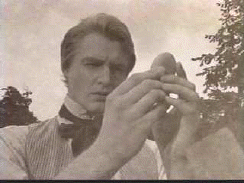 The same cunning and avarice that led Smith
to dabble with "peekstones" to divine the location of hidden treasures was pressed into service as
he developed a crude scheme to make a living off of booksales to the local churches and
public. Knowing well the naive piety he could exploit, Smith clearly appeared to be
banking upon it to gain their attentions. Sadly, he succeeded beyond his wildest
imagination, even if his status as "prophet" was largely unrecognized for
several years after the book's publication, except by the true believers who flocked to
his fledgling church. This is largely because the evidence shows that Smith never initially intended to start a
new religious movement. But events and local zeal by readers quickly convinced him that
there was a future to the myth he created, a golden opportunity to make a name.
Events ran away with him, and soon Smith found himself at the center of the
attentions of both the devout and the skeptical. The
marketing of the book to ministers also seem to indicate this: it attracted the fanatical
Campbellite minister Sydney Rigdon whose restorational elitism profoundly shaped Smith's
evolving religious vision (16). Together with the duplicity of Smith's associates
Cowdery,
Harris and Whitmer, their affirmation of the Book of Mormon as a part of "God's restoration
of the true Church" helped attract the hundreds, than thousands who would travel with them
across the Midwest to create their own religious utopia, Zion, which would evolve into the
LDS Church of today.
The same cunning and avarice that led Smith
to dabble with "peekstones" to divine the location of hidden treasures was pressed into service as
he developed a crude scheme to make a living off of booksales to the local churches and
public. Knowing well the naive piety he could exploit, Smith clearly appeared to be
banking upon it to gain their attentions. Sadly, he succeeded beyond his wildest
imagination, even if his status as "prophet" was largely unrecognized for
several years after the book's publication, except by the true believers who flocked to
his fledgling church. This is largely because the evidence shows that Smith never initially intended to start a
new religious movement. But events and local zeal by readers quickly convinced him that
there was a future to the myth he created, a golden opportunity to make a name.
Events ran away with him, and soon Smith found himself at the center of the
attentions of both the devout and the skeptical. The
marketing of the book to ministers also seem to indicate this: it attracted the fanatical
Campbellite minister Sydney Rigdon whose restorational elitism profoundly shaped Smith's
evolving religious vision (16). Together with the duplicity of Smith's associates
Cowdery,
Harris and Whitmer, their affirmation of the Book of Mormon as a part of "God's restoration
of the true Church" helped attract the hundreds, than thousands who would travel with them
across the Midwest to create their own religious utopia, Zion, which would evolve into the
LDS Church of today.
Despite the piety of millions who hold that the Book of Mormon is divine in origin, we certainly beg to differ. History has proved over and over that sincerity and fervor have never guaranteed that truth would accompany it - the same coercive and authoritarian spirit that Smith and other LDS Church leaders walked in today is used by present Church leadership to anathematize any opposition, as is seen in Russell Ballard's discourse entitled "Beware of false prophets and false teachers" at the recent LDS Church General Conference on October 3, 1999:
False prophets and false teachers are those who declare that the Prophet Joseph Smith was a duplicitous deceiver; they challenge the First Vision as an authentic experience. They declare that the Book of Mormon and other canonical works are not ancient records of scripture. (15)
It is clear that no quarter has been given by LDS leadership to those who would call for serious questioning of Mormon faith in the Book of Mormon. But this position is consistent with the historical dogmatism the LDS Church has produced over the years in the defense of its claims of being the "restored church" with the "restored gospel" as presented by the Book of Mormon. One either submits their views to the official Church position or stands under the harsh spotlight of church condemnation as a deceiver - including those who don't believe the Book of Mormon to be "ancient records of scripture." Ballard makes no distinction between those who are non-LDS and LDS individuals who would disagree with them. All are under the Church's sanction and must be shunned.
So be it. To stand for truth no matter the cost is never easy, but when the glory of God is at stake, we have found nothing more worthy of any evil accusation thrown against us. We still will passionately assert that the Book of Mormon is a religious fable that has nothing to do with authentic and historic Christian truth, except where it plagiarized from the Old and New Testaments of the Bible and would admonish all who would accept it as otherwise to again carefully consider the truths we have presented.
In closing, we offer this final observation:
Many Mormons will ask, in perfectly sincere, yet profoundly misguided zeal "have you prayed about it, to see if it is true?" To which we reply that there is no need for you or anyone else to pray to God to discover if it is true or not, since the established facts we have just shared clearly prove that the book does not contain even the slightest bit of divine inspiration about it. It is a crude, contradictory human fiction that does not even compare to the glorious and truly inspired marvel you hold in your hands when you take up the Holy Bible. It does not deserve to be even imagined as being a "companion to the Bible" or "another Testament of Jesus Christ." We instead recommend that you turn to the Bible alone for spiritual insight, for comfort, and to hear the true Gospel of Jesus Christ for yourself .. not the fantasy of the Book of Mormon.